Select Telehandler Tires By Size
Find the best pneumatic (air) and solid telehandler tires. Below are selections of the most common telehandler tire sizes. Click on the sizes to see what tire options we offer. For a full list of tire sizes, see the chart at the bottom of the page.
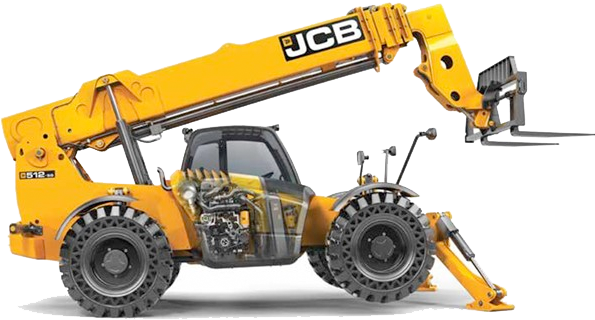
What is a telehandler?
Telehandlers are widely used in the construction, commercial installation and film industry. They function much like a forklift but is more a crane than forklift, with the increased versatility of a telescopic boom that can extend forwards from the vehicle.
Telehandler Solid tire advantages include:
- Downtime minimal (bolt-on)
- OEM Wheel Assemblies
- More usable rubber
- Single stage construction
- Several rubber blends
- Advanced aperture structure improves ride
Industrial Tire Load Index, Speed Ratings and Radial Star Ratings
Industrial Tires often have a load rating and speed index in the description. This standard information helps define each tire's abilities across models and brands.
- Load Index Chart
- Speed Rating Chart
- Star Rating v. Ply Rating
Selecting the Right Tires for your Telehandlertop
While tires are not likely the first thing you think about when choosing a telehandler, you should review your options to ensure you get the right type for the typical application and budget. Tires will impact your telehandler's reliability, the total cost of ownership and affect your job site performance and ride comfort.
Air-filled pneumatic telehandler tires
As the least expensive telehandler tire option, air-filled pneumatic tires are the lightest and provide the best overall floatation when working in soft ground conditions. They will also provide the operator with the best overall ride comfort.
However, those qualities do come at a cost, especially when working at sites with a lot of construction debris like nails, screws, rebar and other material that could puncture the tire, which is a pretty common place at most job sites. No one profits from downtime.
Urethane Foam-filled pneumatic telehandler tires
Urethane foam can be added to a pneumatic tire anytime during the life of a set of tires; however, we recommend at least 80% (or more) tire life remains before adding to the tires. Foam will add additional weight to the machine and affect its performance and floatation. Most operators say foam-filled tires perform better on rough, unimproved terrain because of the added weight. The chance of getting a flat tire on the job is also greatly reduced, but keep in mind, foam-filled tires are still susceptible to damage, especially sidewall damage.
Solid telehandler tires
Solid rubber tires are growing in popularity. They last anywhere from 4-8 times as long as a pneumatic tire, and they make downtime caused by a flat tire a thing of the past. This makes them an ideal fit for building sites with a lot of construction debris. However, the tradeoff is that solid tires are more rigid than urethane foam or air filled tires, which will impact the ride comfort for the operator. Also, the added weight of the rubber will adversely affect a telehandler's floatation in soft ground conditions.
Telehandler Tire Capacitytop
| Load Capacity | |||||||
|---|---|---|---|---|---|---|---|
| Size | Tread | OD (in.) | Section Width (in.) | 9 mph (lbs.) | 16 mph (lbs.) | 25 mph (lbs.) | Weight (lbs.) |
| Click on size for tire options offered | |||||||
| Pneumatic Tires | |||||||
| 12.50x80-18 | G2/L2 | 37.7 | 11.5 | . | . | 5200 | 95 |
| 13.00x24 | G2/L2 | 51.1 | 14.4 | 14330 | . | 6005 | 161.2 |
| 14.00x24 | G2/L2 | 53.9 | 15.7 | 13889 | . | 6780 | 183.4 |
| 15.5-25 | G2/L2 | 52.3 | 17.2 | 11488 | 10496 | 8644 | 159.0 |
| 17.5-25 | G3/E3 | 55.3 | 19.4 | 13561 | 11532 | 9493 | 257.0 |
| 370/75-28 | L3/E3 | 50.2 | 14.6 | 12015 | . | . | 193.75 |
| 400/75-28 | L3/E3 | 51.6 | 15.6 | 13228 | . | . | 193.75 |
| Solid Rubber Tires | |||||||
| 13.00x24 | G2/L2 | 50.8 | 13.0 | 15322 | 14054 | . | 615 |
| 14.00x24 | G2/L2 | 53.4 | 13.9 | 16942 | 15542 | . | 704 |
Data may vary by manufacturer and compound. Information is provided as a general guide only. If size is not listed, please call toll-free 604-265-1118. |
|||||||
Solid Vs. Urethane Foam Tirestop
Telehandler solid assembly tire advantages (over pneumatic polyurethane filled) includes:
- Minimal machine downtime (bolt off / bolt on)
- Better chucking resistance –pneumatic casings are prone to ripping if sidewall is impaled
- More usable rubber
- Much more tire life (2X - 3X)
- Recycling easier –wheel & rubber easily separated
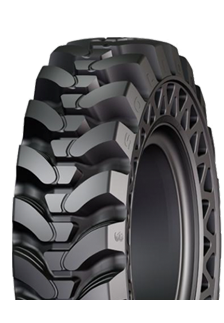
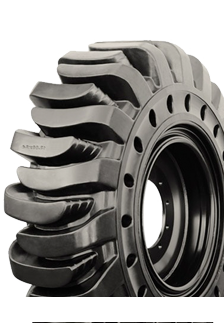
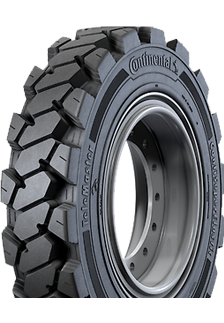
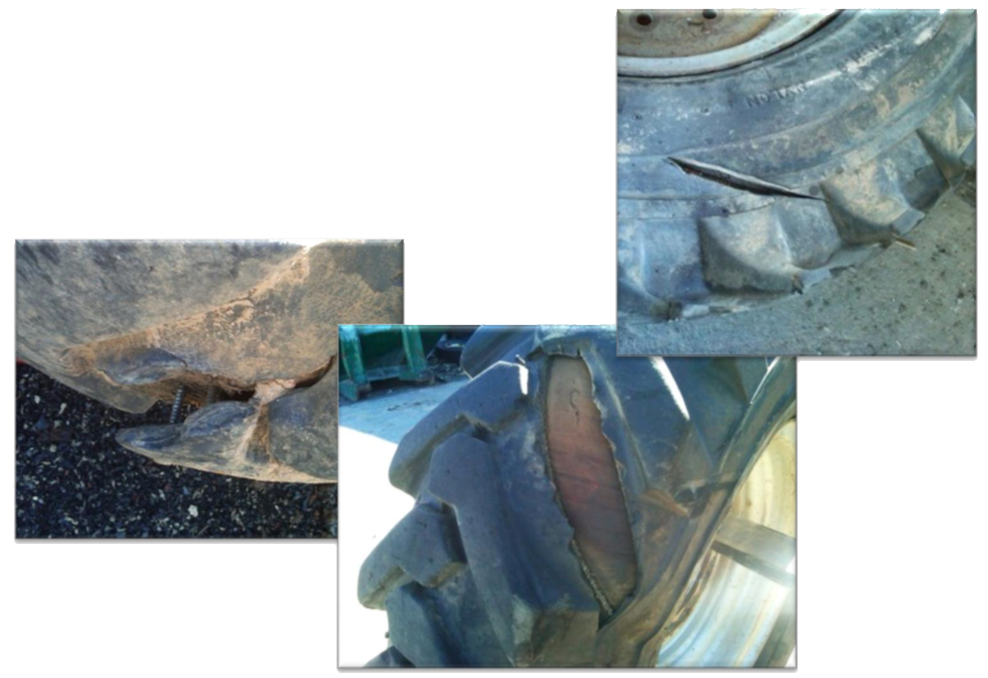
Benefits of Solid Rubber Telehandler Tirestop
Upgrading to a set of solid rubber telehandler tires can deliver benefits for both your fleet and your business in general. These include:
- Significantly reduced downtime
The main cause of downtime for telehandler operation is a flat tire. Solid rubber telehandler tires will completely eliminate all downtime caused by flat tires. This reduction in downtime notably increases your profit during the lifespan of the machine.
- Improved stability
Stability is key to a telehandler's ability to reach high places.
- Solid tires are heavier that pneumatic tires and this weight is down low on the machine's centre of gravity for improved stability.
- Part of stability is maintaining correct air pressure in all four tires —Solid tires have no air, so they are always even.
- Longer lifespan
Solid rubber telehandler tires have more rubber and a deeper tread than conventional pneumatic tires. If a solid tire is damaged by a foreign object (likely a fence post flange), you may cut or chuck out a small amount of rubber while continuing on with the job, while pneumatic tire will go flat, and most likely need to be replaced. A single set can be counted on for over 5,000 flat-free hours between changes, minimizing downtime for your fleet and helping you stay productive.
- Cost-effective performance
Between their lower maintenance requirements, longer life and improved versatility, solid rubber telehandler tires are one of the most cost-effective options in the industry.
Buy on-line or talk with a knowledgeable industrial tire & track specialist:
